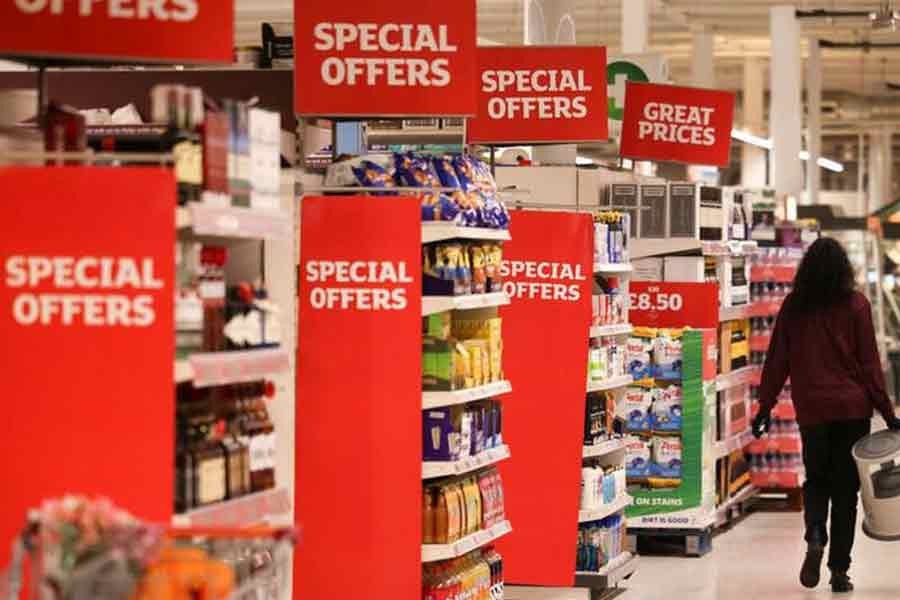British grocery sales rose 9.4 per cent to a record 12.8 billion pounds ($15.3 billion) in the four weeks to Dec 25, though growth was driven by price inflation rather than increased purchasing, market researcher Kantar said on Wednesday.
The market researcher said sales measured by volume, or the amount people bought, fell 1 per cent year-on-year, showing the challenges shoppers are facing during a cost-of-living crisis, according to Reuters.
“This story played out across the traditional Christmas categories. For example, value sales of mince pies soared by 19 per cent but volume purchases barely increased at all," said Fraser McKevitt, Kantar's head of retail and consumer insight.
Kantar said grocery price inflation was 14.4 per cent in December, down from 14.6 per cent in November, with prices rising fastest in markets such as milk, dog food and frozen potato products.
“This is the second month in a row that grocery price inflation has fallen, raising hopes that the worst has now passed," McKevitt said.
He noted that consumers continued to trade down to supermarkets’ own label products, with sales rising by 13.3 per cent, well ahead of a 4.7 per cent increase in branded lines.
Kantar said visits to supermarkets increased 5.2 per cent year-on-year. Online grocery sales rose 4 per cent, though its share of the market fell 0.6 percentage points to 11.6 per cent.
Market leader Tesco, Sainsbury's and Asda all delivered solid performances with sales on a value basis up 6.0 per cent, 6.2 per cent and 6.4 per cent respectively over the 12 weeks to Dec 25.
But German-owned discounters Aldi UK and Lidl GB remained the fastest growing chains with growth of 27.0 per cent and 23.9 per cent respectively, partly reflecting new store openings.
Morrisons and Waitrose were the laggards with sales falls of 2.9 per cent and 0.7 per cent respectively.
On Tuesday, Aldi itself reported a 26 per cent increase in December sales.
Tesco and Sainsbury's are due to update on Christmas trading next week.
Overall UK inflation is running at 10.7 per cent and consumers face the prospect of a tighter squeeze in 2023, with higher taxes and mortgage rates and scaled-back government support on household energy bills.


